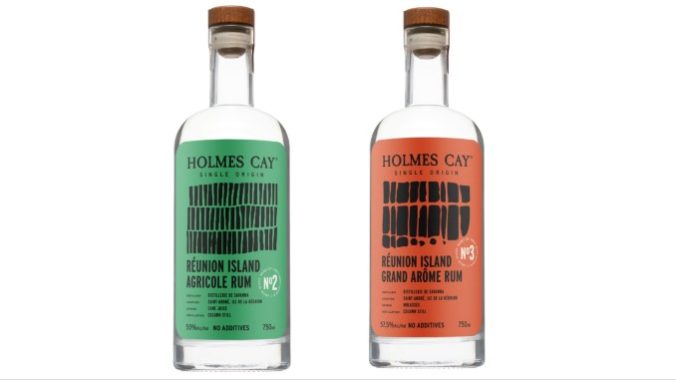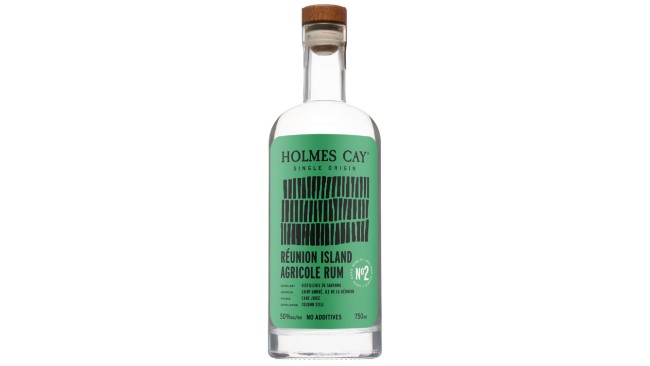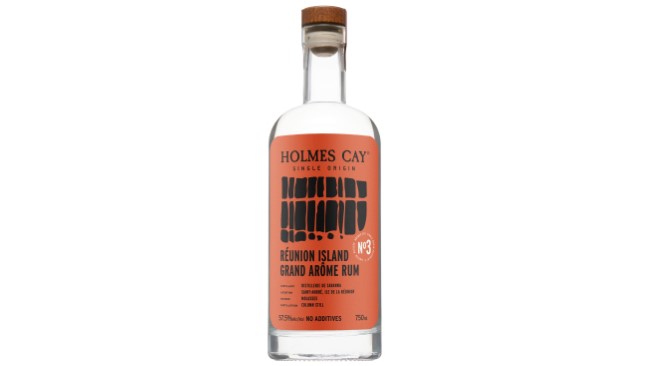Tasting: 2 Wild, Weird Réunion Rums from Holmes Cay (Agricole, Grand Arome)

Of all the major, common spirits, rum truly is the genre that most often seems to involve falling down a wild, wooly rabbit hole of mythology and quasi-history. There are simply so many corners to the global category of sugar cane spirits, and so many legendary products that individual rum geeks have spent their lives trying to hunt down, recreate or simply understand. Everything you learn about rum tends to teach you how little you truly know about the spirit, and this is something Holmes Cay understands perfectly well. The independent bottler is well known to rum geeks for their often cask-strength bottlings from regions and distilleries from all over the Earth, but their latest expression has revived one particularly obscure style I’ve never actually had the chance to taste before. As so often happens in the rum world, it’s another first-time experience.
These are the two latest releases in Holmes Cay’s Single Origin series, which is designed to be a more affordable series, typically presented at lower age statements and proof points (though these are still quite punchy), while retaining vivacious character from specific rum-producing regions. They hail from the French overseas region/island Réunion, found East of Madagascar, well off the African coast. Réunion is a unique place, being technically a fully integrated part of France itself, but simultaneously acting as technically the southernmost part of the European Union and the only Eurozone south of the equator. But their history is also tied up in the production of sugarcane, and as a French territory, rum geeks know what that typically means: Rhum agricole, produced by the fermentation and distillation of freshly pressed sugar cane juice. This is the prevailing method of rum production in former French territories in the Caribbean as well, with the best-known agricole rums hailing from islands such as Martinique and Guadeloupe.
One can’t simply reduce rum production in these places to rhum agricole, however. Although this style of rum from fresh cane juice is the overwhelming majority today, rum producers in Martinique (and Réunion) once made rum from molasses with more regularity as well. Known as rhum grand arome, these were seemingly high-ester rums that were effectively like the French-speaking Caribbean’s answer to the funky, high-ester rums of Jamaica. Today, only Martinique’s Le Galion distillery makes grand arome rum on that island, leaving it as something of a footnote in history. But it would seem that Réunion’s Savanna Distillery produces both styles, and Holmes Cay has capitalized by bottling both at once, so consumers can taste them against each other. And so, that’s exactly what we’re going to do.
Holmes Cay Réunion Island Agricole RumABV: 50% (100 proof)
MSRP: $40

As Holmes Cay puts it:
The Holmes Cay Réunion Island Agricole Rum — Single Origin Edition is a traditional, unaged rhum agricole from the Distillerie de Savanna of Réunion Island. It was distilled on the Savalle copper column still from fresh cane juice and bottled in New York State at 50% ABV.
This is, therefore, an expression of specifically Réunion terroir, assuming this is made with sugar cane grown on the island. Like many classic “white” rum agricoles from the Caribbean, this is entirely unaged, preserving all of its funky, earthy weirdness intact. And this is indeed a weird one, folks.
On the nose, the first thing you get is a huge note of olives–you sometimes get green or black olives on these styles of rum, but I’ve never had such a concentrated sense of olive brine as you get here. It is wild, salty and strange, with some more familiar grassiness blending in with more exotic, funky earthiness and rubbery tones. It’s like some kind of Provencal rum, tapenade-esque, like you’d spread it over bread. On the palate, I’m getting light cane sweetness and some candied lemon peel, with more olive and complex, hard-to-place herbal and earthy flavors. Frankly, I’m actually finding it a bit overwhelming to taste neat, but it would probably make for one racy daiquiri.
This is a fascinating flavor, and very much unlike even other rhum agricoles I’ve had over the years from Martinique and beyond. Entirely its own thing.
Holmes Cay Réunion Island Grand Arome RumABV: 57.5% (115 proof)
MSRP: $50

The Grand Arome rum from Réunion is described in this way by Holmes Cay:
The Holmes Cay Réunion Island Grand Arome Rum — Single Origin Edition is a traditional, molasses, unaged high ester grand arome rhum from the Distllerie de Savanna of Réunion Island. The edition was distilled on the Savalle copper column still from molasses after a long fermentation. It was bottled in New York State at 57.5% ABV.
I’m particularly fascinated to try this one, because the history of grand arome rum is tangled up in the incredibly complicated history of tiki’s foundational cocktail the mai tai. Although many rum geeks know that the original 1944 mai tai from Trader Vic was based solely on Jamaican rum, fewer realize that the “Martinique rum” mentioned in Vic’s famous “Second Adjusted Formula” is now thought to have been grand arome rum rather than agricole. This means that for at least a period, Trader Vic’s official conception of the mai tai was based on both Jamaican rum and rum grand arome, making this style an important historical footnote.
On the nose, the difference between the two bottles here is immediately apparent–this one is significantly fruitier and richer, with less of the freshness and earthiness of the agricole and more ripe tropical fruit impressions, along with a touch of something toasty and cocoa-like. I’m getting some floral impressions and flashes of pepper and baking spice, along with overripe tropical fruit that evokes something closer to Jamaican rum hogo, with notes of methol and rubber as well. All in all, this is a significantly more familiar flavor profile to people familiar with high-ester rums, though it certainly still stands out–and the flavors are complementary enough to funky Jamaican rums that I can see why Trader Vic would reach for something similar to this in a mai tai.
At the end of the day, these two releases are wildly unique, and feel like exploring the true avant-garde of rum, both past and present. And they even manage to be affordable, which is a great bonus. If this corner of rum history is something you want to explore, these are definitely bottles to seek out.
Jim Vorel is a Paste staff writer and resident beer and liquor geek. You can follow him on Twitter for more drink writing.







































